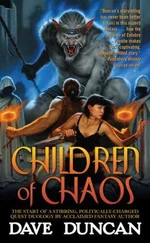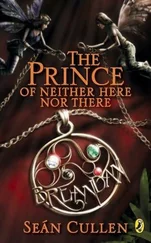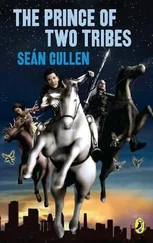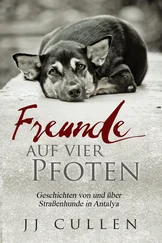kicked Byron out:Dylan’s Diversion file contains several references to Byron’s eviction. The “Drug/Alcohol History” section of the summary states Byron “was kicked out of the house for continued drug use.”
CHAPTER 14. HOSTAGE STANDOFF
Two to three hundred:This is Kate Battan’s estimate.
The cops were livid:Police reactions to news coverage were based on my interviews with senior officers and school officials among them that day. Their statements in news reports served as a secondary source.
CHAPTER 15. FIRST ASSUMPTION
Detectives arrived at the Harris place:Several officers filed detailed reports about their encounters at the Harris and Klebold homes.
Fuselier got the call:Most scenes involving Agent Fuselier were drawn from interviews with him; his wife, Mimi; and their two sons. Much of it was corroborated by police reports, his published work, and research by other journalists. I questioned Agent Fuselier more than fifty times between 2000 and 2008.
CHAPTER 16. THE BOY IN THE WINDOW
Mr. D arrived in the hallway:The account of Mr. D’s rescue of the girls’ gym class was based on interviews with him and some of the girls in the class.
John and Kathy Ireland knew:Most scenes involving the Ireland family and their earlier life were drawn from my interviews with them. Additional sources are noted in later chapters.
CHAPTER 17. THE SHERIFF
The SWAT teams:I am indebted to the Rocky Mountain News, whose wonderful piece “Help Is on the Way” provided the basis for much of my description here. Kate Battan added and corrected details.
Lead investigator Kate Battan:Accounts of Kate Battan’s involvement were drawn from my interviews with her, police reports, and the excellent “Inside the Columbine Investigation” series, led by investigative reporter Dan Luzadder and published in the Rocky Mountain News in December 1999. I also discussed Luzadder’s findings with him, and I am grateful for his generous support.
At 4:00P. M., Jeffco went public:Quotes and descriptions from this fateful press conference were based on my observations and the audiotape I recorded. I spent most of the late afternoon near the command post in Clement Park. Stone and Davis spoke regularly. Students kept wandering through to provide their evolving perspectives.
“We ran for our lives”:Several quotes from Tom and Sue Klebold—lincluding this one and the ensuing statement by their lawyers—were made to David Brooks in 2004. He reported them in his New York Times column.
CHAPTER 18. LAST BUS
Brian Rohrbough gave up:Most of my accounts of Brian Rohrbough and Sue Petrone were based on numerous interviews with them. I also used their TV interviews and countless news reports quoting them. My accounts of John and Doreen Tomlin came from Wendy Zoba’s book Day of Reckoning, which was based on her interviews. The descriptions of the Red Cross volunteer Lynn Duff came from my interview with her. Details involving DA Dave Thomas and the coroner came from police reports and news accounts, particularly Luzadder’s “Inside the Columbine Investigation” series.
CHAPTER 19. VACUUMING
Marjorie Lindholm had spent:Marjorie Lindholm’s reflections came from her memoir.
CHAPTER 20. VACANT
There is a photograph:The Rocky Mountain News did an outstanding job in capturing the pain of this tragedy visually, and won the Pulitzer for those photos. Fourteen of the most iconic can be viewed at the Pulitzer Web site.
the survivors had changed:Virtually all accounts of students’ reactions that week came from my observations and conversations with survivors. I spent most of that week in Clement Park, area churches, and student hangouts. I interviewed perhaps two hundred students during that time, and observed hundreds more. The depiction was also informed by media accounts I absorbed at the time and revisited later.
Light of the World seats eight hundred and fifty:This scene was drawn from my observations and audiotape. The event was not announced to press, and the major news outlets were asked not to go inside. I was told about it by students in Clement Park. As a freelancer, I got no notice not to avoid it, and no signs were posted. I saw TV crews outside and assumed that cameras were forbidden but reporters were allowed. Consequently, to my knowledge, this scene has not been depicted in print, except in my profile of Frank DeAngelis a few months later in 5280, Denver’s city magazine.
It’s shocking:Quotes from the Rocky Mountain News.
the crime of the century in Colorado:For depictions of the police investigation I relied heavily on thousands of pages of police files and my interviews with Agent Fuselier and senior Jeffco officials, including Kate Battan and John Kiekbusch. Luzadder’s “Inside the Columbine Investigation” series was extremely helpful for corroboration. Dan spent months working on the series and was generous and candid in discussing his observations and perceptions with me.
30,000 pages of evidence:This figure includes approximately 4,000 redacted pages.
CHAPTER 21. FIRST MEMORIES
It didn’t start:Information on Eric and Dylan’s childhoods and activities during their final years came from a wealth of sources, including hundreds of pages of their writings, appointments in their day planners, their videos, extensive police interviews with their friends, television interviews with those friends, my interviews with investigators who examined all the evidence, news accounts by trusted journalists (particularly Lynn Bartels), and my interviews with some of their friends, including Joe Stair, Brooks Brown, and several kids who had known them earlier. Some of their closest friends chose not to cooperate with me but gave detailed statements to police detectives. Tom and Sue Klebold provided a wealth of details about Dylan’s childhood in their police interview. Bartels and Crowder’s Rocky Mountain News profile “Fatal Friendship” was particularly helpful; I relied heavily on it. Other key profiles were Simpson, Callahan, and Lowe’s “Life and Death of a Follower,” Briggs and Blevin’s “A Boy with Many Sides,” and Johnson and Wilgoren’s “The Gunman: A Portrait of Two Killers at War with Themselves.”
“I just remember”:The quotes from childhood friends and neighbors of Eric’s in Plattsburgh and Oscoda were drawn from the Jeffco Sheriff’s Office Final Report and the profiles cited above . The accounts were remarkably similar and fairly unrevealing: Eric seemed like an average kid prior to high school. This corresponded to both Eric’s depictions of his younger self and friends’ accounts to police.
Major Harris did not tolerate:My characterizations of Wayne Harris’s parenting style came from several sources: his own twenty-five pages of notes in a steno pad he labeled “Eric”; Eric’s frequent complaints about his dad’s punishment in his writings; eight-and ten-page questionnaires about the family filled out by Eric and his parents for entrance to Diversion; Eric’s statements to his Diversion counselor, which were recorded in his file; and statements by Eric’s friends, primarily in their police reports but also in interviews with me and in some TV interviews.
Читать дальше







